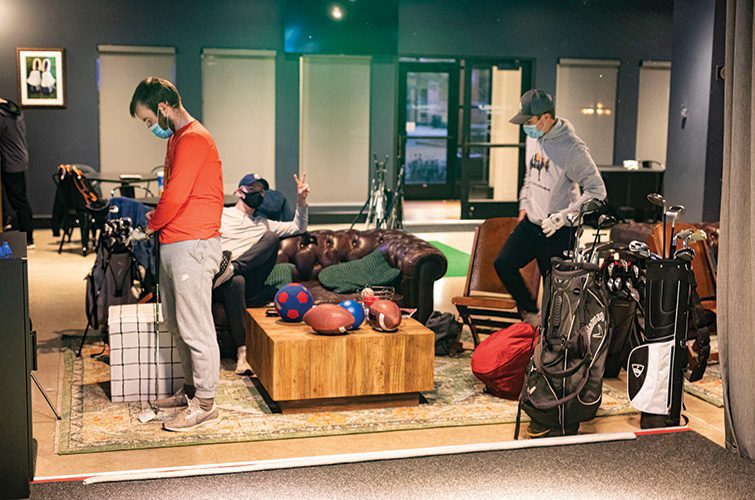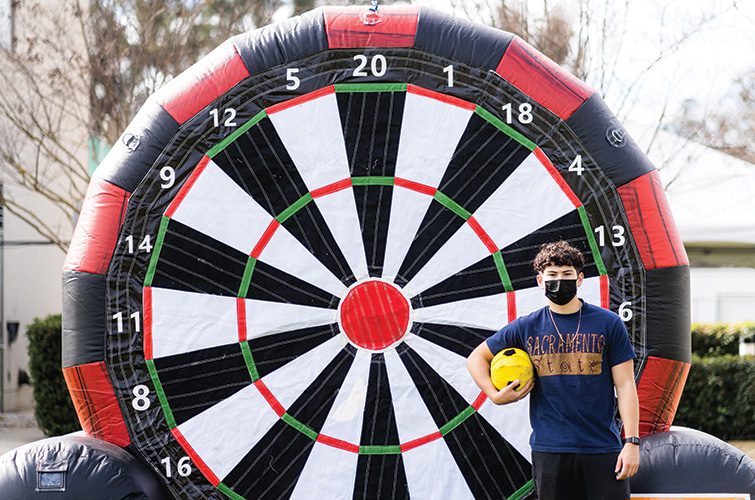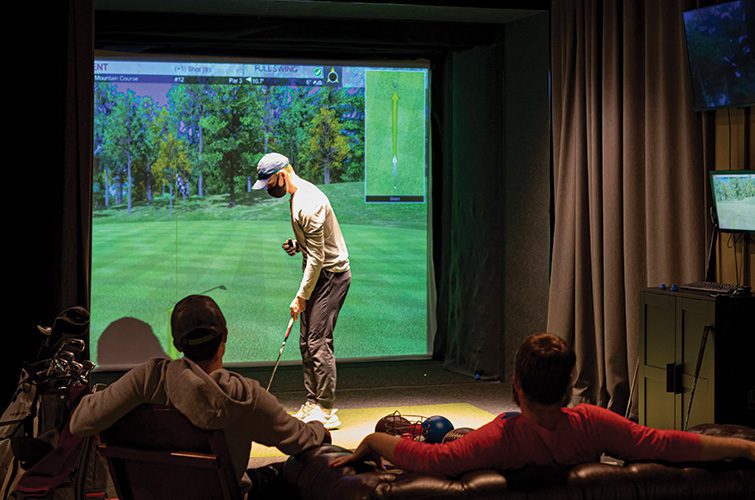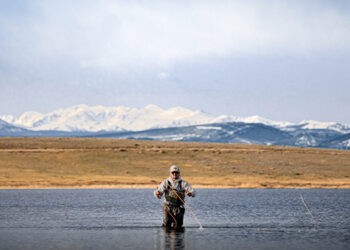In order to follow new health and safety guidelines, club sports and intramurals professionals thought outside the box.
Below, multiple departments share how they are currently running their programs. They also discuss future plans for this area of rec and advice for getting offerings up and running again.
Club Sports
Jenny Larson, the associate director for Recreation Programs and Facilities at Elon University, said her department moved teams into tiers of high and low risk. In each of these classifications, certain policies, procedures and modifications were required.
“Each team that wanted to practice also had to submit a practice plan with modifications,” said Larson. “All plans needed to be approved by our assistant director of Sport Programs prior to practicing.”
Examples of practice plan modifications included:
- Smaller number of people at practices.
- At most two practices a week.
- Complete a symptom check prior to attending practices.
- Masks required at all activities.
- Cleaning before and after use of equipment.
At Keene State College, Lynne Andrews, the director of Recreational and Intramural Sports, shared her department created return-to-play protocols for club sports teams. “The numbers were down for club sports teams. Some chose not to be active, but it allowed underclass students a chance to participate in club activity, which helped them to be ready for next year,” said Andrews.
Drew Devore, the assistant director of Competitive Sports at the University of Minnesota, shared their club sports program focused on encouraging non-traditional ways of practicing, such as virtual practices and events, and providing spaces to record and stream. “We also offered support to club officers to keep club members engaged and active,” said Devore.

Intramurals
The current state of intramurals at Sacramento State is both virtual and in-person. Andrew Reddish, the assistant director of Intramural Sports and Staff Development, shared virtual offerings consist of:
- Sports trivia
- Esports tournaments
- Fantasy sports and more
In-person offerings consist of:
- Cornhole
- An inflatable soccer target competition
- Softball home run derby
- Golf
- Foot golf
“The feedback has indicated participants would love to see more programming and would be very excited to see offerings expand in the near future if restrictions ease,” said Reddish.
The University of Minnesota also found success in offering virtual and in-person options, as well as new activities that fit their guidelines and limited budget.
“We found students enjoyed participating in non-traditional activities. These included trivia, cornhole, pickleball, tennis, a Top Golf simulator league and a Bachelorette/Bachelor fantasy league,” said Devore. “Not only were we able to keep our students engaged, we were also able to attract new students who had not been involved with our program before. And while most of these activities were new to us, they were successful and will become a mainstay in our increased activity offerings.”
EXTRA CREDIT: David Jachimowicz of Millersville University spearheaded the intramural esports program and shares on it here.
Devore shared they were able to make these offerings cost effective by running multiple, non-officiated activities in the same space. For example, running spikeball and cornhole at the same time in the same space kept staffing costs minimal.
Also taking advantage of virtual programming, Elon University incorporated offerings such as fantasy football and esports tournaments and leagues. Larson shared her team also offered many one-day tournaments of individual and dual sports in the fall and spring semester, such as cornhole, spikeball, table tennis and pickleball. For all activities throughout the year, masks were always required.
“Intramural one-day tournaments boomed in a way they haven’t. They were a good way to safely get students together,” said Larson. “There are a lot of lessons creative programming provided us this year as we move forward.”

Looking Ahead at Club Sports and Intramurals
In fact, Larson elaborated the mix of virtual and in-person offerings provide a blueprint of variety her team will use to plan ahead. “Having many one-day sport tournaments at the beginning of the academic year where students can come and bring a friend or two provides a low-stake way for new students to gather, get to know more about programming and hopefully create a path to get into other programs in sports leagues, teams or other areas of our department as they navigate their college experience,” said Larson.
Reddish at Sacramento State explained his team still plans to have a hybrid approach of virtual and outside in-person events for the time being. “We would love to ease back into league play as our campus begins repopulating,” he said. “Because our current and previous offerings have been approved by our university, we will continue with those as well.”
At Keene State, Andrews is also looking ahead. She hopes to resume more normal activity for both club sports and intramurals next year. However, there is the understanding that some restrictions may still be in place.
Advice and Tips
To put “thinking outside the box” into action, Devore suggested talking with your student body to find out what kinds of activities they would like to see in club sports and intramurals. “Students coming back to in-person activities are going to want more diverse program offerings,” he said. “Find ways to collaborate with other campus departments to share costs and resources associated with new programming.”
Reddish added it’s important to be mindful of where students are at in their academic calendar and their virtual fatigue. “We have to be strategic with what we program, when we choose to offer it and the format of delivery now more than ever,” he said. “We held a few esports tournaments when new versions of games came out. It turns out we should not have chosen the new version of the game. Many students were still playing the older version of the game, and it showed.”
EXTRA CREDIT: Aaron Mowen, the director of campus recreation at Saginaw Valley State University, shares advice on club sports.
Outside of the programs themselves, Larson elaborated the importance of ensuring your policies and procedures are clear. For instance, make sure that you have multiple avenues to share them with student staff and participants. “The importance of communication — taking the time to answer questions of those who will work most closely with the program to know the ‘why,’ how to communicate it and resources if they need more assistance — is key,” she said.
And with a number of guidelines in place and expected to continue, Andrews advised departments to work with their institution’s risk mitigation and management team to ensure protocols and policies align. “Be flexible to adjust how you do your work, how you hire and train student staff, what programs you offer, and how you will administer them,” she added. “Just be prepared you probably won’t be resuming ‘normal’ operations completely this year. But hopefully with fewer restrictions than this year.”











